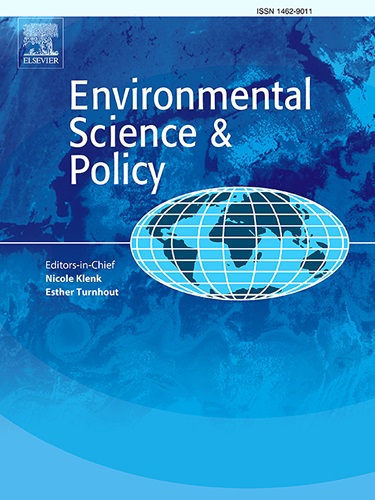碳市场的诚信挑战:比较《联合国气候变化框架公约》和亚马逊生物群自愿REDD+核查
IF 4.9
2区 环境科学与生态学
Q1 ENVIRONMENTAL SCIENCES
引用次数: 0
摘要
碳市场的完整性问题,如泄漏、重复计算和超额计算减排,会导致市场机制的声誉、转换和碳信用失效风险。本研究通过比较《联合国气候变化框架公约》、Verra和金标准(GS)的减排核查方法,确定了碳市场的风险因素。对备受瞩目的减少毁林和森林退化排放+ (REDD+)项目的验证方法进行了分析,目标是亚马逊生物群落,该生物群落拥有REDD+项目中最大的碳信用额。我们使用了巴西2024年提交的森林参考排放水平和Verra和GS的REDD+项目描述。基于《行为准则》和《核心碳原则》,本研究发现基线、泄漏和碳库是影响碳信用额度质量的主要因素。《联合国气候变化框架公约》采用基于结果的方法,从历史排放量中减去当前排放量,而Verra和GS采用一切照旧的方法,从基线情景中减去预计排放量。虽然《联合国气候变化框架公约》考虑国家排放以防止一国内部的泄漏,但Verra和GS将项目地点附近的估计泄漏排除在其减排中。基于这些结果,本研究估计2021年亚马逊森林砍伐和退化地区的碳储量为910,900,983 tCO2eq;Verra为757,123,531 tCO2eq;GS为817,150,150 tCO2eq。为了确保碳市场的完整性,我们建议将核查机构的方法标准化,采用基于结果的减排方法,在法律管辖范围内建立项目点,并根据东道国的数据计算排放中的碳库。本文章由计算机程序翻译,如有差异,请以英文原文为准。
Integrity challenges in carbon markets: Comparing UNFCCC and voluntary REDD+ verification in the Amazon Biome
Carbon market integrity issues, such as leakage, double counting, and over-counting of reductions, lead to reputation, conversion, and carbon credit invalidation risks of market mechanisms. This study identified the risk factors for carbon markets by comparing the verification methodologies for emission reductions of the UNFCCC, Verra, and Gold Standard (GS). The verification methodologies for high-profile Reducing Emissions from Deforestation and Forest Degradation Plus (REDD+) projects were analyzed, targeting the Amazon biome, which holds the largest carbon credits from REDD+ projects. We used Brazil’s 2024 submission of the Forest Reference Emission Level and the REDD+ project descriptions of Verra and GS. Based on the Code of Practice and Core Carbon Principles, this study found that the baseline, leakage, and carbon pools are the main elements affecting the quality of carbon credits. The UNFCCC uses a results-based approach, subtracting current emissions from historical emissions, whereas Verra and GS use a business-as-usual approach, subtracting projected emissions from a baseline scenario. While the UNFCCC considers national emissions to prevent leakage within a country, Verra and GS exclude the estimated leakage near project sites from their reductions. Based on these results, this study estimated the carbon stocks for deforested and degraded areas in the Amazon in 2021 to be 910,900,983 tCO2eq for UNFCCC; 757,123,531 tCO2eq for Verra; and 817,150,150 tCO2eq for GS. To ensure integrity within carbon markets, we suggest standardizing verification bodies’ methodologies, using results-based reduction methodology, establishing project sites in legal jurisdictions, and calculating carbon pools in emissions consistent with the host country’s data.
求助全文
通过发布文献求助,成功后即可免费获取论文全文。
去求助
来源期刊

Environmental Science & Policy
环境科学-环境科学
CiteScore
10.90
自引率
8.30%
发文量
332
审稿时长
68 days
期刊介绍:
Environmental Science & Policy promotes communication among government, business and industry, academia, and non-governmental organisations who are instrumental in the solution of environmental problems. It also seeks to advance interdisciplinary research of policy relevance on environmental issues such as climate change, biodiversity, environmental pollution and wastes, renewable and non-renewable natural resources, sustainability, and the interactions among these issues. The journal emphasises the linkages between these environmental issues and social and economic issues such as production, transport, consumption, growth, demographic changes, well-being, and health. However, the subject coverage will not be restricted to these issues and the introduction of new dimensions will be encouraged.
 求助内容:
求助内容: 应助结果提醒方式:
应助结果提醒方式:


